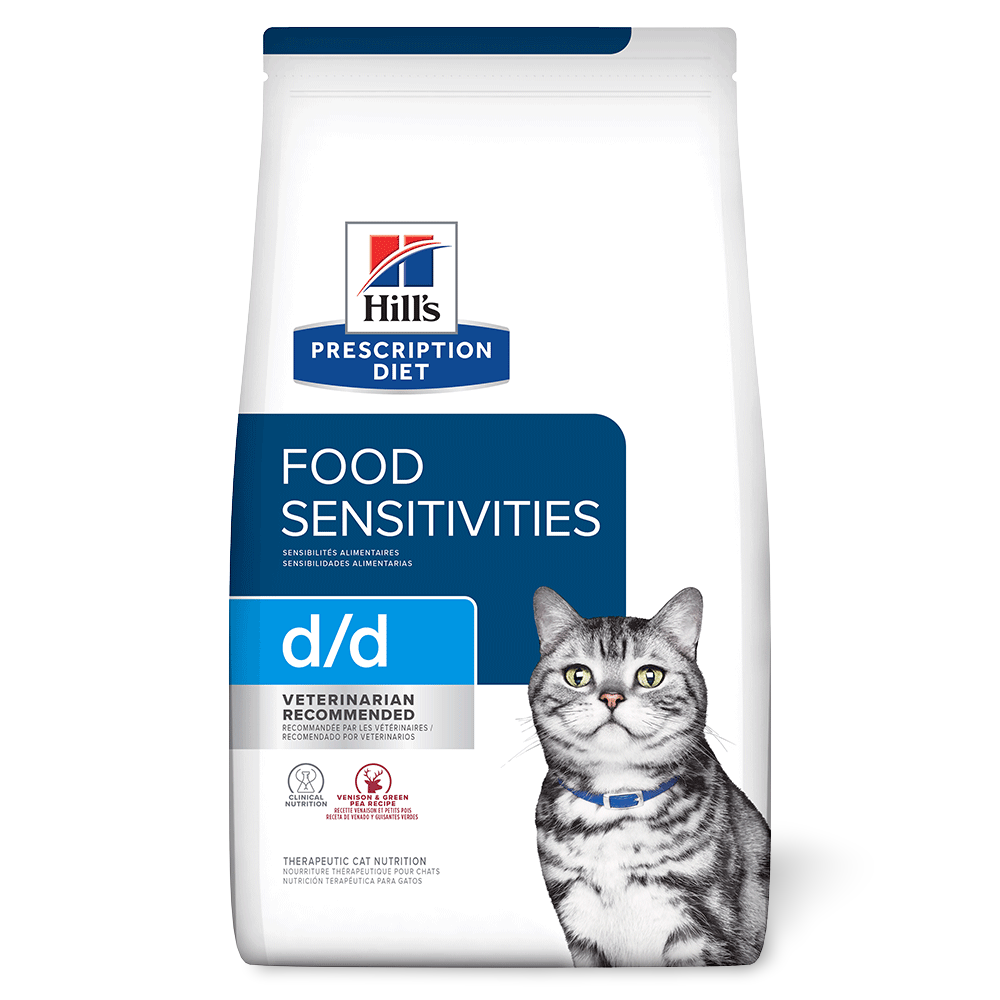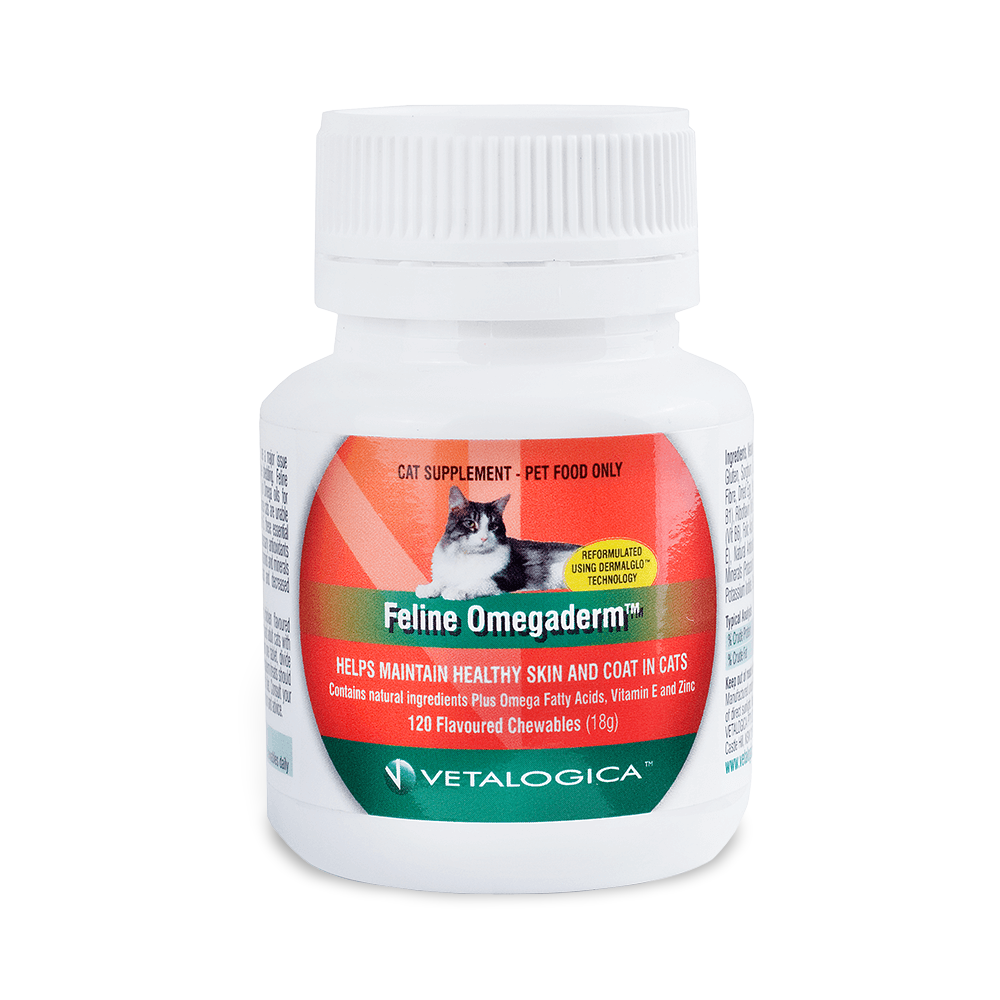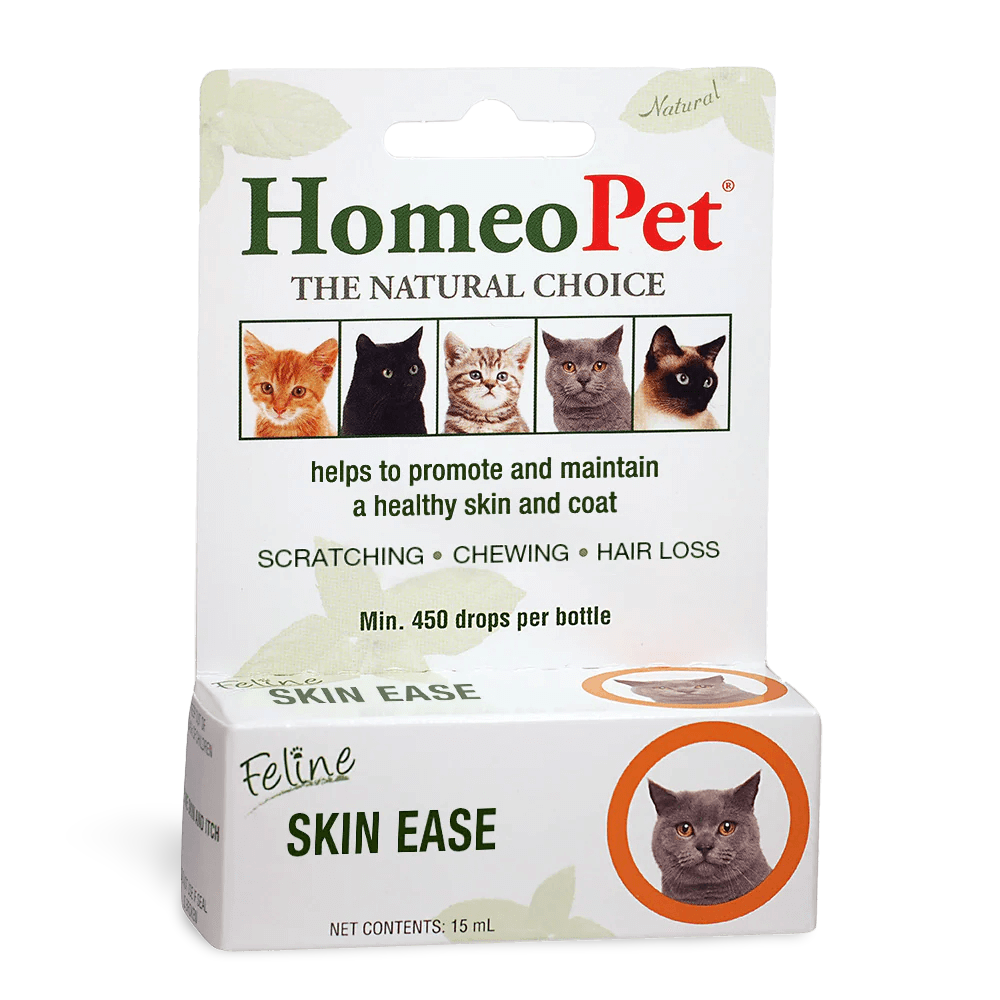Common Causes of Itchy Skin in Cats
This article is written by Pet Circle veterinarian,
Lick, lick, lick... nibble, nibble, nibble... scratch, scratch, scratch! Is your beloved feline excessively grooming or tearing themselves to shreds, and you just can't figure out why?
Many cats suffer from ongoing itchy skin issues. However, the common causes of itchy skin in cats are fairly unique - and actually quite different to the most common causes of itchy skin in dogs. While itchiness in dogs is often caused by nvironmental allergens such as grass, pollen, and insects, our feline friends tend to suffer from a different set of causes.
The Pet Circle Vets have outlined the common causes of skin itchiness in cats, ways to manage these issues at home and most importantly, when to see your veterinarian. Eliminate scratching in your feline friend, once and for all!
Contents
Common Causes Of Itchy Skin
1. Fleas
Fleas are wingless, ant-sized critters which bite your cat and feast on their blood. The itchiness caused by fleas is actually due to an allergy to flea saliva (known as flea allergy dermatitis) rather than the movements of the crawly bugs themselves.
Fleas are without a doubt the most common cause of itchiness in cats. In fact, veterinarians have a special saying: 'Itchy cats have fleas until proven otherwise.'
"But I don't see any fleas on my cat!" Many pet owners refuse to believe their fur baby has fleas, because they simply can't see any. The truth is, you probably never will. Fleas are incredibly tricky. They are experts at hiding among fur, and often require a flea comb to be visualised.
"How do I tell if my cat has fleas?" Have a look at the skin on your cat's chin. You might not be able to spot fleas even if your cat is infested with them, but what you will see is flea dirt. Flea dirt is the digested blood faeces that fleas leave behind on your cat's skin. Flea dirt looks like small bits of black dirt, and can usually be seen on the tip of your cat's chin. (No, your cat isn't just dirty - it's flea poop!)
To distinguish between 'real dirt' and 'flea dirt', simply dab a damp paper towel onto the dirt. Flea dirt will create a reddish colour on the wet paper, as it is composed of dried blood. Yuck!
Products such as Bravecto, Bravecto Plus, Revolution, Revolution Plus, Seresto, Advantage and Advocate are effective flea control options for treating and managing fleas.
Looking for more information on cat preventatives? Read our veterinary written article The Flea, Tick and Worming Guide For Cats.
Shop All Cat Flea Preventatives
2. Food Allergies

Some cats are sensitive to particular ingredients in their diet. In fact, food allergies are actually a lot more common in cats than they are in dogs. A food allergy can manifest in severe itching around the head, neck, mouth, and eyelids, or over the belly, inner legs, and armpits.
What are the most common food allergies in cats? You might be surprised to hear that the most common food allergies in felines are to proteins such as fish, dairy products, chicken, and beef. Wheat and corn allergies are also occasionally seen.
How are food allergies diagnosed? To determine if your cat has a food allergy, an elimination trial should be performed. This involves feeding a special diet free from common allergens for 6-8 weeks. If an improvement is seen, you can then introduce a different ingredient each week and test for any reaction. The base diet used during the elimination trial should be either a veterinary hydrolysed diet, or a diet made with a novel protein. A novel protein is a meat your cat hasn't had exposure to before such as venison or rabbit.
Did you know: Feeding your cat a Rotational Diet has been associated with a reduced risk of allergies. For more information, read our veterinary written article: Rotational Diets: The New Way To Feed Your Cat .
3. Ringworm

Despite the name, Ringworm is not actually a 'worm', but a fungus. This fungal infection usually produces red, ring-like lesions with a scabby or bald centre, or thumbprint-shaped scabby lesions. However ringworm can also sometimes present as generalised, dry, scaly skin.
Ringworm is transmissible between pets and humans. Young children, the elderly or anyone who is immunocompromised are at most risk of contracting ringworm. While cats are often blamed for ringworm infections, transmission can occur from contact with any surface that fungal spores are present including other children at school or even gym equipment!
Proper diagnosis by a veterinarian, is the first step in treatment. Ringworm requires topical treatment with an antifungal cream and 3-4 weeks of twice weekly washing with an antifungal shampoo such as Malaseb. Persistent infections may require oral medication which can be prescribed by your veterinarian.
Ringworm can persist in your home environment for months. Getting rid of it requires extensive sterilisation and cleaning of your home and all bedding. Hard surfaces should be cleaned with F10 disinfectant or diluted bleach daily to kill the fungal spores and prevent reinfection.
Looking for more information about ringworm? Read our veterinary written article Ringworm in Cats: Symptoms, Cause and Treatment.
4. Ear Mites

Photo source: Joelmills via Wikimedia Commons
Ear mites are tiny parasites that live deep in the ear canal and cause intense itching. They are most commonly seen in kittens or immunocompromised cats. If your cat is scratching at their ears or head, ear mites may be the cause.
Ear mites need to be diagnosed with a proper otoscopic examination by your vet, and they often require treatment with medicated ear drops. Some common flea treatment products can help prevent ear mites, such as Bravecto, Bravecto Plus, Revolution, Revolution Plus and Advocate.
5. Inhaled and Environmental Allergies

While not as common as in dogs, environmental or contact allergies may be the cause of itching in some sensitive kitties. Contact allergies in cats may occur to dust, perfumes, fabrics, cleaning products, or even to certain types of plastic food bowls. Contact allergies may cause an irritation around the mouth as well as feline acne.
Contact allergies are best treated by limiting exposure to the causal allergen - for example, by removing plastic bowls and replacing with ceramic alternatives. If limiting exposure is not possible, your cat may require ongoing treatment with corticosteroids or antihistamines.
Looking for more information about Feline Acne? Read our veterinary written article What Is Feline Acne?.
6. Stress

Sometimes the cause of over-grooming is not itchiness at all, but a psychogenic issue such as stress. Compulsive over-grooming due to stress can often present as alopecia (hair loss) down the back or over the abdomen. Similar to nail-biting in humans, stressed cats will groom themselves excessively in response to an associated endorphin release. In times of stress, a cat will repeatedly seek out this 'high' in an effort to self-soothe.
How To Decrease Stress In Your Cat:
- Pheromones: Feliway, available in a pheromone-diffusing spray and slow release diffuser is very effective at reducing stress in anxious cats.
- Anti-anxiety supplements: Natural supplements such as Zylkene or Paw Blackmores Complete Calm Chews help promote feelings of calm.
- Calming Prescription Diet: Royal Canin Calm is a prescription diet specifically designed to combat anxiety and reduce stress in your cat.
- Provide plenty of perches and hiding places: If there's anything at home causing stress for your kitty such as a child or another pet, it's important that your cat feels they have a safe space to escape to. Why not try a tall cat tree which provides extra high perches and hiding boxes.
- Ensure enough litter trays:This is particularly important for multi-cat households. If your cat doesn't have a toilet all to themselves, they can become stressed and act out by spraying, showing aggression, or over-grooming.
- Prescription medications: In severe cases of anxiety, your veterinarian may consider prescription medications such as Clomicalm, Lovan or Valium.
How To Support Your Cat's Skin and Coat At Home

A strong skin barrier means that your cat has a physical barrier to the cause of the allergen, while reducing the inflammatory response as the skin is thicker and healthier. Thankfully it is easy to help strengthen the skin barrier at home, with some affordable over-the-counter products, and some easy at-home changes.
There are many skin supplements available to help support and strengthen your cat's skin. These can be either given in conjunction with a skin support diet or added to your pet's current routine.
Omega oils, are clinically proven to strengthen the skin barrier. A stronger barrier will quicken skin healing time, and reduce the likelihood that your cat will have a reaction.
Looking for more information on supplements? Read our veterinary written article Your Guide To Pet Supplements.
Shop All Cat Skin Health Products
See Your Veterinarian

If your cat is scratching continuously or wounds are forming which do not heal, it is important for them cat to see a veterinarian. In some cases antibiotics may be required to treat skin infections or the veterinarian may prescribe medication to stop your pet's unpleasant itchiness and make them more comfortable.
Elimination diets, blood and intradermal tests can be performed by a veterinary dermatologist to pinpoint the cause of the allergy. Once the allergen is known then a treatment plan can be formulated to help eliminate the allergic response and itchiness.
While finding the cause of itchy or sensitive skin can be a time consuming endeavour, it is worth it to see your cat purring again.
Keep your cat treated for fleas, consider a diet change, and remember to strengthen the skin barrier. Your cat will thank you!
Further Reading
Premium Pet Food: Is It Worth It?
Want to know more? Check out our Discover Page for more tips on keeping your pets happy and healthy.







































